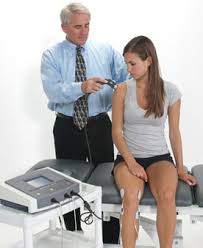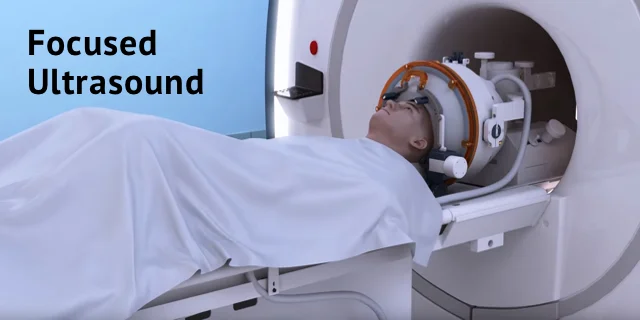Combination Therapy (Ultrasound and Interferential Therapy)
Table of Contents
What is a Combination Therapy?
In general terms, combination therapy involves the simultaneous application of ultrasound (US) with electrical stimulation therapy. In Europe, Diadynamic Currents are frequently utilized, but in the UK, the US is most often combined with bipolar Interferential Therapy (IFT).

it is suggested that:
by combining US with IF, the advantages/effects of each treatment modality can be realized, but lower intensities are used to achieve the effect. the accommodation effects that accompany IF treatment are reduced (or even eliminated)
The main advantages of such a combination are said to be:
- in localizing lesions (especially chronic) ie. diagnostic use
- in ensuring accurate localization of US treatment ‑ to provide increased accuracy/effectiveness in treating deeper lesions
- in treating trigger points
- accommodation effects that accompany IFT treatment are reduced
- lower intensities are used to achieve the effect

Mechanism of Combination Therapy
Exposure of a peripheral nerve to US reduces the membrane resting potential by increasing its permeability to various ions (especially Sodium (Na+) and Calcium (Ca++). By virtue of this adjusted permeability, the nerve membrane is taken closer to its threshold (the point where it depolarizes), though doesn’t usually make the nerve fire. The simultaneous application of the Interferential current through the nerve induces the depolarisation potential, though it will take a smaller current than usual to achieve this due to the potentiation effect of ultrasound Therapy.
This can easily be demonstrated. If both the US and IFT are applied, and during the application, the US is turned down to zero, the sensation produced by the IF will diminish even though the IF intensity has not been changed. The intensity of the IFT sensation returns when the US is turned up again.
The combination of US with IFT appears to give rise to less adverse treatment effects than are associated with the combination of US with Diadynamic Currents, or other electrical stimulations. It has also been suggested that a greater effective treatment depth can be achieved with the US ‑ IF combination though there is no direct evidence for such a claim.
it would appear that by combining the two treatment modalities, none of the individual effects of the treatments are lost, but the benefit is that lower treatment intensities can be used to achieve the same results, & there are additional potential benefits in terms of diagnosis & treatment times.
Treatment Notes
A) Diagnostic Use of Combined Therapy
It is suggested that a continuous US output of 0.5W/cm2 should be used for this procedure, though numerous practitioners do claim to have achieved significant results with lower intensities. A frequency of 1MHz is preferable if available as it gives more effective penetration into the tissues. The IFT output is most commonly set to 100Hz (with no sweep) using a bipolar
output.
Technique:
Place the indifferent electrode (the normal IFT pad electrode) in a position so that the current can pass through the tissue in question. As a general guide, it can be placed on the same aspect of the limb (more usual for superficial lesions) or on the opposite side of the limb (for deeper lesions).
Turn on the US first, followed by the IFT (parameters as above)
Starting with the US head distant from the lesion, gradually increase the IFT output intensity until the `normal’ tingling is encountered by the patient.
Move towards the lesion site, noting any areas of increased sensitivity, local or referred pain.
The point of maximal sensitivity is assumed to be the focal point of the lesion, though it will not provide information as to the precise tissue in question, nor to depth – only a ‘geographical’ location. This position is usually consistent and reproducible.
Treatment with Combined Therapy
Diagnostic and therapeutic uses of Combination Therapy need not be used together. As a treatment, it is appropriate when the therapeutic effects of US and those of IFT are both justified. At the present time, and in the absence of any specific evidence of additional effect when used in combination, this would seem to be the sole justification for the modality.
The individual doses for the US and IFT should be those which are appropriate for the lesion and the required effects. There is no evidence that ‘special’ treatment doses are required. It should be noted however, that the intensity of the IFT required to achieve the usual effect is likely to be lower than normal.
Some manufacturers suggest that it is not necessary to incorporate a swing in the IF dose as the effect of accommodation is minimised. There does not appear to be any reason why an appropriate frequency swing should not be used if it is appropriate to the effect required.
If the treatment times are dissimilar, there is a potential problem in that the US component will usually finish first, leaving the IFT element to continue in isolation. When the required treatment times are similar, the combination of the modalities can save time and effort (even without additional effect). When they are dissimilar, it may be as effective to apply two separate treatments.
It is important to observe the safe & effective US treatment technique during combined treatment i.e. always using a moving treatment head, maintain effective contact, & maintain the perpendicular relationship between the treatment head & the patient’s skin whenever possible.
Treatment Examples
- Patient with an acute lesion/tear of the lateral ligament of the ankle. Ultrasound is justified on the basis that it will promote the inflammatory/repair process and interferential is used for its effect in reducing acute pain.
- US dose (based on normal dose calculations)
3MHz, 0.2 W/cm2, Pulse 1:4, 10 minutes
- Interferential dose (for acute pain)
90 – 130Hz, bipolar, 10 minutes
- Interferential pad electrode placed medially at the ankle, US treatment head applied over the torn component(s) of the lateral ligament.
The treatment could be more effective than either one modality in isolation, though there is no evidence that by using them simultaneously, there is any advantage over using them sequentially.
Contraindications:
There do not appear to be any specific contraindications for combination therapy other than those for the individual modalities.








mera ek bachha hai jiska ek pair thoda pair teda rakhta hai or ghutno par hath rakhkar khada hota hai koi ilaj hai